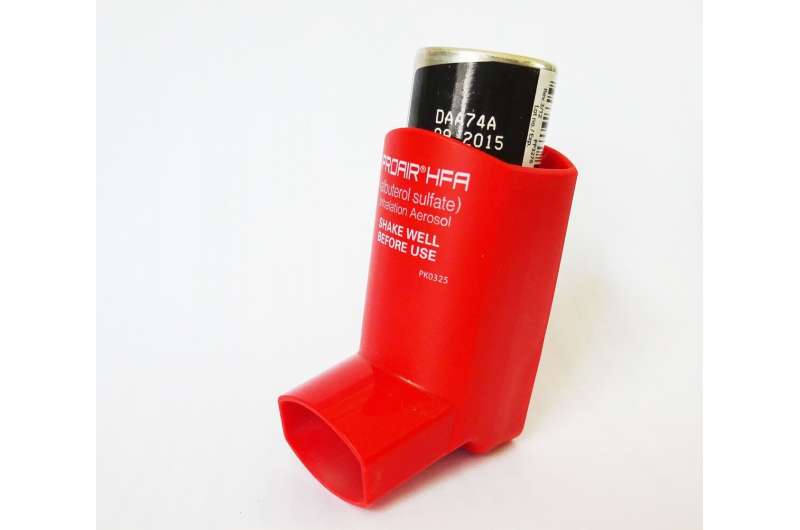Common household products should carry asthma warnings, research concludes

Commonly-used household products should carry a warning that they increase the risk of asthma, according to a new evidence review.
New research conducted by Smartline, a research project funded by the European Regional Development Fund, finds evidence that a group of chemicals found in a wide range of products in people's homes increases the risk of asthma. Authors conclude that labeling should reflect this risk, and warn people to ventilate their homes while using them.
The research reviewed 12 studies into Volatile Organic Compounds (VOCs), which are emitted as gasses from certain solids or liquids. VOCs are emitted by a wide array of products, including some that are widely used as ingredients in household products. Paints, varnishes and wax, many cleaning, disinfecting, cosmetic, degreasing and hobby products may all contain ingredients that emit VOCs. Concentrations of many VOCs are consistently up to ten times higher indoors than outdoors.
The research, led by the University of Exeter, provides collective evidence that, for adults the composition of many VOCs found in household products increase the risk of asthma. These particles and compounds vary from by household, caused by factors like leaks in building fabric, heating and ventilation systems, damp, smoking, cleaning products and aerosols.
The findings uncover that high exposure to VOCs also causes wheezing and shortness of breath for people without a respiratory illness.
Asthma is a complex disease, impacting around 10 per cent of the UK's adult population—one of the highest rates in the world. The new systematic review published in Environmental Research, is the first of its kind to investigate the relationship between air pollutants and the risk of asthma for people in higher-income countries.
One highly regarded study found a 15 per cent increased risk of asthma with exposure to Limonene, a naturally occurring aliphatic compound found in products like shampoos, detergents and air fresheners. Wood and kitchen paint also seem to increase symptoms.
Lead researcher, Cheryl Paterson of the University of Exeter, says that their "findings are concerning because we often use multiple products at home and people are unaware of the dangers. For example, the findings show the risk of asthma to increase by 40 per cent for people exposed to five VOCs, while another study found that people without asthma are also at risk of wheezing attacks, especially when exposed to products containing benzene, a common chemical used to make other industrial chemicals and as a solvent in many everyday products."
This research highlights the risks that indoor pollutants can have on people's respiratory health, especially for vulnerable people who already experience health problems.
Professor Karyn Morrissey, Smartline's Principal Investigator, says that "as people are spending more time indoors, our research is particularly important to inform new public health strategies to reduce ashthma. To raise awareness of the potential health risks, industry and policymakers need to use more explicit health warnings on product labels. This should include better health messaging and advice about using and storing thee chemicals in the home, including proper ventilation while in use."
The paper is entitled 'Indoor PM2.5, VOCs and Asthma Outcomes: A Systematic Review in Adults and their Home Environments', and is published in Environmental Research.
More information: C.A. Paterson et al, Indoor PM2.5, VOCs and asthma outcomes: A systematic review in adults and their home environments, Environmental Research (2021). DOI: 10.1016/j.envres.2021.111631




















